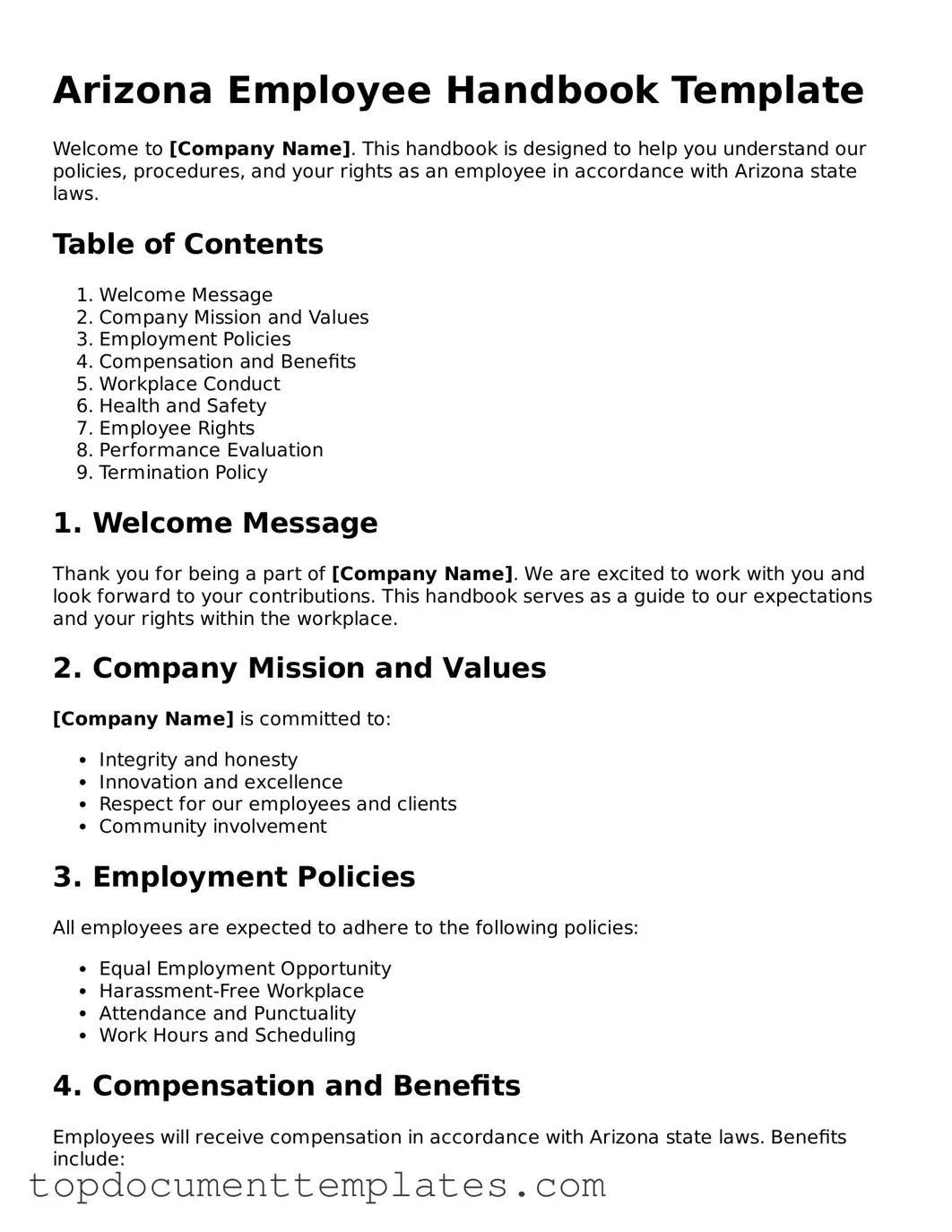Creating an employee handbook is a vital step for any Arizona employer, as it serves as a foundational document that outlines workplace policies, procedures, and expectations. This handbook not only communicates essential information about company culture and values but also addresses key topics such as employee rights, benefits, workplace conduct, and disciplinary procedures. It provides clarity on matters like attendance, dress code, and harassment policies, ensuring that employees understand their responsibilities and the standards they are expected to uphold. Moreover, the Arizona Employee Handbook form is designed to comply with state and federal laws, offering protection for both the employer and the employees. By having a well-structured handbook, businesses can foster a positive work environment, reduce misunderstandings, and mitigate potential legal risks. This article will delve into the significant components of the Arizona Employee Handbook form, highlighting its importance in promoting transparency and accountability within the workplace.
